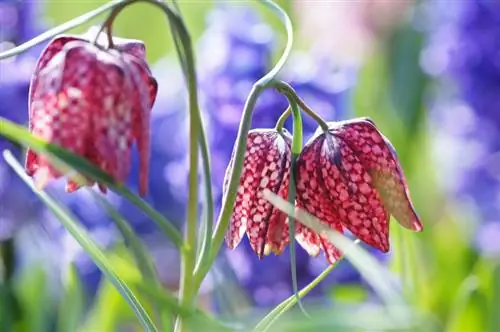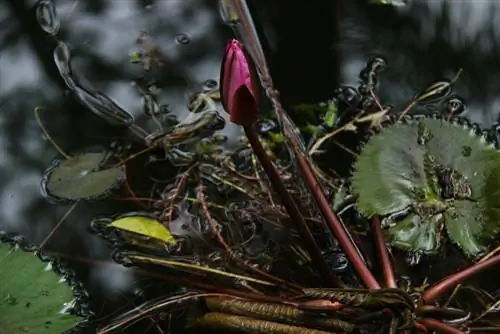- Author admin [email protected].
- Public 2023-12-16 16:46.
- Last modified 2025-01-23 11:20.
The chess flower, which blooms in April and June, has strikingly patterned flowers. The perennial lily plant, which comes from Eastern Europe, is relatively undemanding and easy to care for.

How do you properly care for the checkerboard flower?
Caring for the checkerboard flower includes regular watering, fertilizing in spring, cutting after flowering, repotting every 2-3 years, and winter protection by watering on frost-free days. It is hardy and should only be treated if there is a snail or lily chicken infestation.
Pouring
Unlike many other garden plants, the checkerboard flower loves wet feet and must therefore be kept evenly moist. This also applies to the summer dormant phase, in which the chess flower absorbs all parts of the plant above ground. However, avoid waterlogging so that the onions do not rot.
Fertilize
Fertilize the plants in the bed with compost at the beginning of the growing season in March (€12.00 at Amazon). A second application of fertilizer does no harm, but is not absolutely necessary.
If you care for the chess flower in the pot, special liquid fertilizer for flowering plants should be given every two weeks during the flowering phase.
Cutting
At the end of May, the blooming period of the checkerboard flower is coming to an end. Anything that has faded should be cut out at this time.
The stems with the leaves remain standing until they have yellowed significantly. This is important because after flowering the chess flower transfers important nutrients from the above-ground parts of the plant into the bulb.
Repotting
If you cultivate the checkerboard flower in a pot or as a companion plant under a bonsai, it must be repotted into commercially available substrate every two to three years in spring.
Wintering
The checkerboard flower is very robust and absolutely hardy. Even the lowest temperatures below zero cannot harm the fragile plant. Therefore no special winter protection is required.
The plant is only at risk from drought, which threatens in winters without significant rainfall. In case of cold frosts, proceed as follows:
- Water well on frost-free days.
- Use cold water. Warm water could stimulate the bulbs to sprout and the chess flower would freeze.
Pests and diseases
The checkerboard flower is extremely robust and is rarely attacked by pests or diseases.
Snails pose a threat to plant he alth, as many species like to eat the leaves of the chess flower. Leaf damage prevents the plant from storing nutrients in the bulbs before the dormant phase. Therefore, fight snails consistently.
Sometimes lily hens eat the leaves. Since the larvae of the bright red beetles can cause massive damage to all lily plants, they should be combated quickly. It has proven itself:
- collecting the adult beetles
- Raising off the larvae
- Spreading rock dust or coffee grounds
In severe infestations, it is sometimes necessary to use an insecticide.
Tip
If you want to propagate the plant yourself, you shouldn't remove everything that has bloomed in May. Allow a few capsule fruits to ripen and only cut them off if you do not want to sow them yourself.






